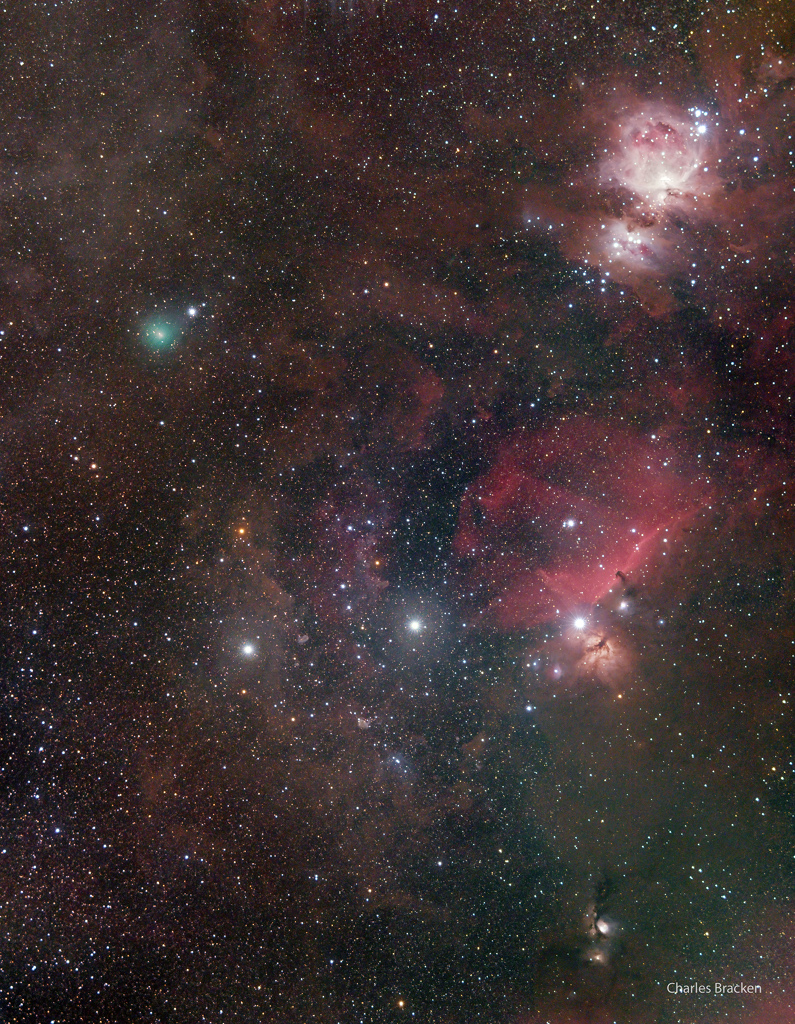2020年11月12日
Comet ATLAS and Orion’s Belt
Image Credit & Copyright: Charles Bracken
Explanation: With its closest approach to planet Earth scheduled for November 14, this Comet ATLAS (C/2020 M3) was discovered just this summer, another comet found by the NASA funded Asteroid Terrestrial-impact Last Alert System. It won’t get as bright as Comet NEOWISE but it can still be spotted using binoculars, as it currently sweeps through the familiar constellation of Orion. This telephoto field from November 8, blends exposures registered on the comet with exposures registered on Orion’s stars. It creates an effectively deep skyview that shows colors and details you can’t quite see though, even in binoculars. The comet’s telltale greenish coma is toward the upper left, above Orion’s three belt stars lined-up across the frame below center. You’ll also probably spot the Orion Nebula, and famous Horsehead Nebula in the stunning field of view. Of course one of Orion’s belt stars is nearly 2,000 light-years away. On November 14, this comet ATLAS will fly a mere 2.9 light-minutes from Earth.
Tomorrow’s picture: pixels in space
阿特拉斯彗星与猎户腰带
影像提供与版权: Charles Bracken
说明: 将在11月14日,运行到最近地球位置的阿特拉斯彗星(C/2020 M3),是在这个夏天,由美国航太总署经费支持的“小行星撞地球最后警报系统(ATLAS )”所发现的另一颗彗星。虽然它的亮度逊于先前的NEOWISE彗星,不过这颗目前在猎户座内飞掠的彗星,用双筒望远镜即可观赏。这幅摄于11月8日的长焦镜头影像,组合自分别突显彗星和猎户恒星的照片。这张深空影像所呈现的色彩和细微结构,超出肉眼及双筒望远镜所能见。在其中,猎户腰带三星水平排列在中下方,左上角有带着鲜明泛绿彗发的这颗彗星。此外,在这片精采的视野里,不难认出猎户大星云和著名的马头星云。腰带三星之一距离地球接近2,000光年,而在11月14日那天,阿特拉斯彗星会以2.9光分的间距掠过地球附近。 (Comet ATLAS (C/2020 M3) 阿特拉斯彗星)
明日的图片: pixels in space







